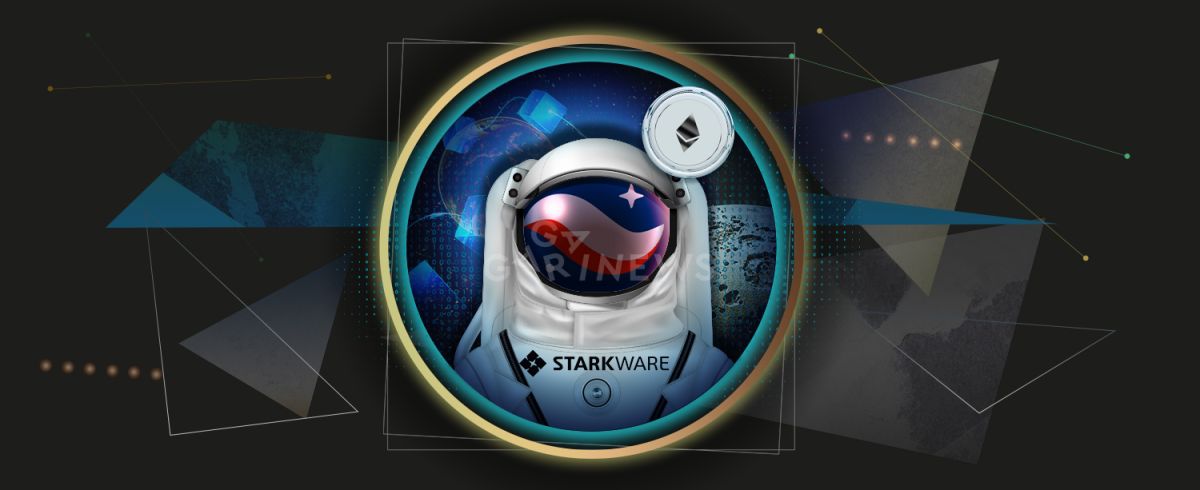Starknet – Layer 2 Ethereum Blockchain Overview

Starknet – Layer 2 of the Ethereum blockchain, based on the ZK-STARK cryptographic mechanism.
On this page
The leading developer of the protocol is the Israeli company StarkWare. The alpha version of the protocol has been available since October 2022, and more than 100 projects have already been launched. Starknet mainnet processes up to 10 million transactions weekly.
The internal STRK token is available only to developers, investors, and project employees. The release of the coin on exchanges is scheduled for 2023.
History of creation
StarkWare Industries was founded by Eli Ben-Sasson (co-founder of Zcash), Michael Riabzev (co-author of ZK-STARK), Uri Kolodny, and Alessandro Chiesa (also involved in the development of Zcash).
The first actual use of the platform was the integration into the decentralized platform dYDX, and Layer 2 for the NFT-focused project ImmutableX. The technology allows users to make transactions on the Ethereum network without commissions, placing transactions on Layer 2 first and then transferring information about them to the main network. Starknet is also successfully used by Rhino and Sorare.
The next stage of development will be the new StarkEx protocol, which will be the third level of the project. This layer is specifically designed to carry some DeFi protocols that suffer from high fees.
Investment rounds
StarkWare has initiated 6 funding rounds. In total, 10 companies and venture funds invested in the project, including Sequoia Capital, Pantera Capital, Coatue, and Tiger Global Management.
The most significant round took place on May 25, 2022. Then $100 million was collected. In total, StarkWare raised $273 million.
StarkWare Investment Activity Details (Crunchbase)
Operation mechanics and principles
Thanks to the unique Rollup technology, StarkNet combines thousands of transactions into batches and confirms their authenticity. The protocol focuses on the use of its own ZK-STARK technology, the main components of which are:
- Sequencer – a server that confirms transactions and blocks;
- Prover – a network participant that creates a cryptographic proof for each transaction that is performed by the sequencer;
- Full Node – a special server where the Pathfinder application is built. It monitors the system's integrity and keeps a record of all transactions.
The network also has 2 main on-chain components:
- Verifier — a smart contract in the Ethereum network that verifies the generated evidence and sends a report to the core;
- StarkNet Core – a smart contract that changes after each added block.
The developers set a goal to reduce the transaction costs by hundreds of times compared to Ethereum. Potential TPS (performance parameter expressed in transactions per second) is approximately 500.
Advantages over analogs
It is worth noting that, due to the underlying technology, Starknet has no competitors. There are other Layer 2 technologies on Ethereum, such as Optimistic and Arbitrum, but they use different principles of operation.
The main advantages of ZK-STARK, according to the Starknet developers, are as follows:
■ Increased network security;
■ Potentially higher scalability;
■ Resistance to outside attacks.
Token and potential airdrop
The STRK token was officially announced in 2022. The coin will perform the functions of transaction fee payment, participating in network governance as part of a DAO, and will allow users to participate in the staking process as part of the Proof-of-Stake consensus algorithm.
The maximum supply is still unknown. The first 10 billion coins will be issued on the Ethereum blockchain and distributed as follows:
- 17% – to early investors;
- 33% – to community members, employees, and developers;
- 50% – to the Starknet Foundation, which will allocate funds from the general fund for further development.
Investor and team tokens are locked up for a year, and complete distribution will take 4 years to avoid sellers' pressure on the price.
The STRK token airdrop is one of the most anticipated activity in the cryptocurrency community. The project has raised almost $300 million in investments, and the ecosystem is already rich in applications. Drop hunters are serious and have been active on the network since the beginning of 2022. The snapshot date (a record of the state of the blockchain that allows you to identify the participants in the promo) is not announced.
Ecosystem
About 100 applications have already been built on Starknet, including:
- Browser wallets Argent X, Braavos, MetaMask;
- Explorers of StarkScan and Voyager blocks;
- Cross-chain bridges StarkGate, Orbiter Finance, Layerswap, Kubri, and Suez;
- DEX exchanges mySwap, JediSwap, and 10KSwap;
- Lending service xBank Finance;
- NFT marketplaces Aspect and Mint Square.
These applications should be interacted with for a potential airdrop.
The list is incomplete and expanding every day. The entire Starknet ecosystem can be found on the official website in the “Ecosystem” section.
Starknet Ecosystem
Project Summary
Starknet looks promising. Unlike most projects, the team first started the project's development and released the internal token after. With sufficient data, it will be possible to fully appreciate Starknet technology only after a while.
Interesting Facts
Recently, Visa stated that it is considering the possibility of cryptocurrency payments through Starknet;
In theory, the ZK-STARK technology allows fitting up to 50 million transactions in one block (against 1,000 on Ethereum).
The content on The Coinomist is for informational purposes only and should not be interpreted as financial advice. While we strive to provide accurate and up-to-date information, we do not guarantee the accuracy, completeness, or reliability of any content. Neither we accept liability for any errors or omissions in the information provided or for any financial losses incurred as a result of relying on this information. Actions based on this content are at your own risk. Always do your own research and consult a professional. See our Terms, Privacy Policy, and Disclaimers for more details.



























